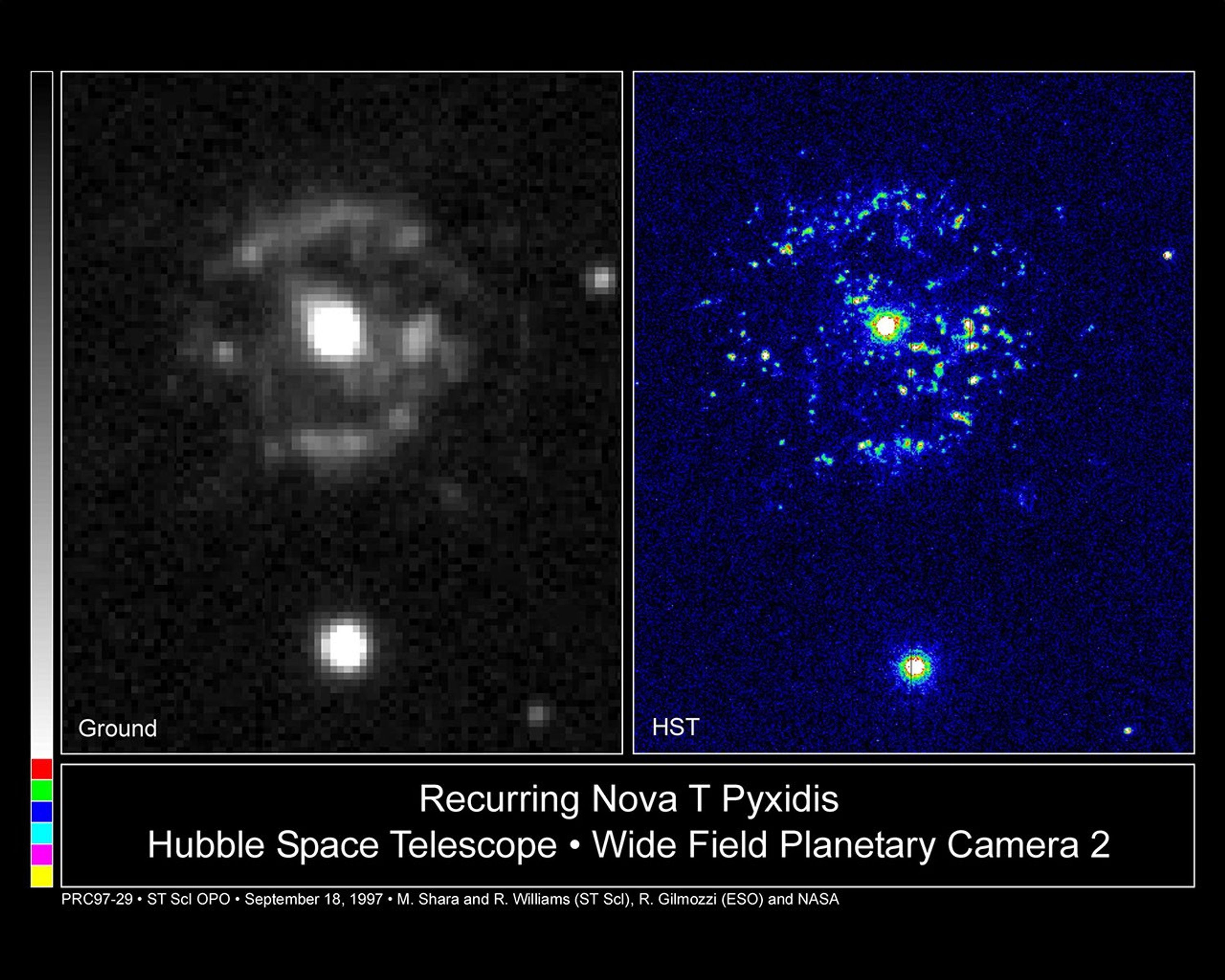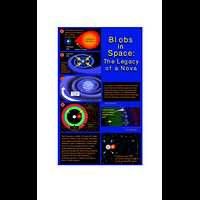1 min read
Blobs in Space: the Legacy of Nova T Pyxidis

The prolific number of eruptions by the recurrent nova T Pyxidis has attracted the attention of many telescopes.
[LEFT] The image on the left, taken by a ground-based telescope, shows shells of gas around the star that were blown off during several eruptions.
[RIGHT] Closer inspection by the Hubble Space Telescope (right-hand image), however, reveals that the shells are not smooth at all. In fact, this high-resolution image shows that the shells are actually more than 2,000 gaseous blobs packed into an area that is 1 light-year across. Resembling shrapnel from a shotgun blast, the blobs may have been produced by the nova explosion, the subsequent expansion of gaseous debris, or collisions between fast-moving and slow- moving gas from several eruptions. False color has been applied to this image to enhance details in the blobs.
The ground-based image was taken Jan. 19, 1995 by the European Southern Observatory's New Technology Telescope in La Silla, Chile. The Hubble telescope picture is a compilation of data taken on Feb. 26, 1994, and June 16, Oct. 7, and Nov. 10, 1995, by the Wide Field and Planetary Camera 2.
T Pyxidis is 6,000 light-years away in the dim southern constellation Pyxis, the Mariner's Compass.
About the Object
- R.A. PositionR.A. PositionRight ascension – analogous to longitude – is one component of an object's position.09h 4m 41.47s
- Dec. PositionDec. PositionDeclination – analogous to latitude – is one component of an object's position.-32° 22' 46.99"
- Object NameObject NameA name or catalog number that astronomers use to identify an astronomical object.T Pyxidis
- Release DateSeptember 18, 1997
- Science ReleaseBlobs in Space: The Legacy of a Nova
- CreditMike Shara, Bob Williams, and David Zurek (Space Telescope Science Institute); Roberto Gilmozzi (European Southern Observatory); Dina Prialnik (Tel Aviv University); and NASA
Share
Details
Claire Andreoli
NASA’s Goddard Space Flight Center
Greenbelt, Maryland
claire.andreoli@nasa.gov































